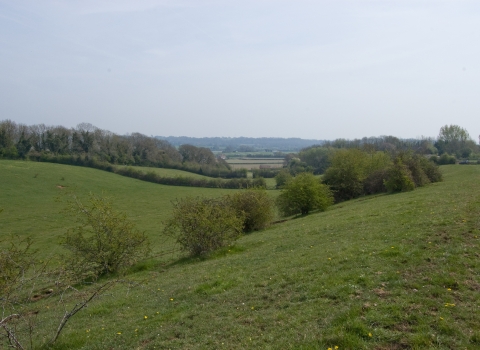
Chris Jones
Know before you go
Dogs
When to visit
Amseroedd agor
Open at all timesAmser gorau i ymweld
Spring and summerAm dan y warchodfa
This charming reserve hosts areas of woodland and scrub, as well as a small remnant of limestone grassland, a habitat that is increasingly uncommon in Gwent.
The woodland is filled with aspen, ash and alder, draped in ivy and spongy green mosses. At the woodland margins, red campion and sweet violet flourish in the shade. In the open limestone grassland, wildflowers provide a banquet for foraging insects, like the brown argus butterfly. Adders live and breed on the reserve; they are most likely to be seen in spring and early summer basking in warm sunshine on the edge of scrub patches.
History
The reserve is so-named as it was part of an area of ‘Poorland’, set aside for the local labouring poor when the rest of the land on the vast Tredegar Estate was enclosed. Up until the end of the 19th Century the land was farmed before being left derelict and used as a tip. With the lack of grazing, trees and shrubs naturally colonised the reserve, forming the diverse woodland that exists today.
Gwent Wildlife Trust bought the site in 1991 and restored the area as a reserve for wildlife.
Directions
By car
From the B4245 in Rogiet, turn into Minnetts Lane, opposite Station Road (signposted Severn Tunnel Junction railway station). Pass under the motorway and keep left, continuing along Minnetts Lane. The reserve entrance is another 1km, on the right.
Near the reserve
Gwent Wildlife Trust’s Magor Marsh, Brockwells Meadows and Lower Minnetts Field reserves are close by.
Neighbouring Slade Woods has a network of footpaths and a very good diversity of woodland wildlife. For historical interests, there are the Roman remains at Caerwent and Caldicot Castle and Country Park.


